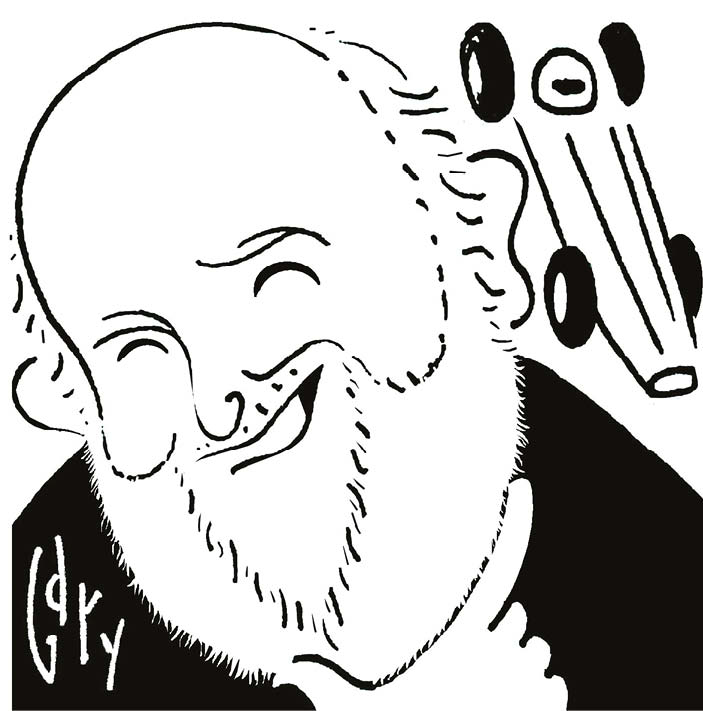
750 M.C. Six-Hour Relay Race (August 8th)
Provisional Results : 1st : Hagley Minis, 292 laps (Tempest, Neal, Mrs. Taylor (1071 Cooper Ss), Schirles (970 Cooper S), Parrish (Cooper)). 2nd : Cherwell Imps, 290 laps (Payne, Harrison,…

Sometimes trying to present the truth of a bygone event, much more so of a bygone project, can become tricky as one tries to reconcile sometimes conflicting accounts from witnesses, judging what memories truly reflect bygone deeds. Occasionally one gets it wrong. Does it matter? For most writers, perhaps, as long as it’s made a good story, nah – not really…
But for those of us who really care about this peripheral historical stuff, of course it matters. That’s one reason why I can spend years trying to get a book manuscript right (yet still, in some details, fail) and why this month I’ll offer some additional input on my Cosworth 4-wheel-drive story in the April issue. It needs it.
We always seek the accuracy that this magazine’s knowledgeable readership expect, and fortunately many of you have worked right there at the true coalface of motor racing endeavour – and really help. Alastair Lyle was a Cosworth draughtsman and project engineer from 1967-79. He produced many of the detailed drawings from which the components of former McLaren designer Robin Herd’s 4WD F1 car were manufactured. Uniquely, to offset the added weight of the 4WD transmission, the Cosworth used one of the company’s 3-litre DFV V8 engines for which the block and heads had been cast not in the standard aluminium, but in lightweight magnesium. Alastair recalls: “It always had low oil pressure as the block and sump were cast from the standard aluminium pattern equipment. Magnesium is lighter, but has the same strength-to-weight ratio, so you will need a larger section for the magnesium main bearing housings to get the same strength as if they had been aluminium. The thick-wall main bearing shells expanded the magnesium housing more than the aluminium one, resulting in chronic lower oil pressure.
“The car also started out with Hewland/ZF type limited differentials at both ends, which proved to be horribly snatchy at the front, which gave it the nasty handling described by Mike Costin. As a first attempt to cure it, we did run a test with a free front diff, which cured the wandering on the straights and also made braking into corners stable with no intermittent front wheel locking after the brakes were applied. Sadly, when the car tried to accelerate hard out of corners, it would then try to spin its inside front wheel and lose traction, which was self-defeating. So the free diff experiment was abandoned – after which we tried a Salisbury ‘Powr-Lok’ diff as it had a more progressive action than the cam-and-pawl ZF type. It was better, but not good enough…
“If Cosworth didn’t build the second 4WD F1 tub, then who did?”
“I think that Keith [Duckworth] actually designed three different ratios for the torque-splitting diff, mounted on the gearbox. There was a 40:60 front/rear torque split as a starter, and then he also did 35:65 and 30:70. It was a six-speed gearbox, and the transmission was fully dry sumped, which was unusual for that era, but good for minimising transmission losses. We used Hewland gears for the pump.
“I don’t ever remember a 20:80 torque split for the Cosworth car, but Matra had one on their 4WD MS84, which Jackie Stewart tested, but decided he would rather have a 0:100 split – rear-wheel drive alone.”
“Trevor Taylor did much of the testing. He wasn’t impressed. We told him that if it might rain he should drive it slowly back. He said that if it rained he’d park the thing and walk back.”
I had mentioned that the six-spoke cast-alloy Cosworth wheel design later became familiar on Robin Herd’s March cars. Alastair Lyle: “March wheels are not identical to the DKD Cosworth ones. On the inside the March drive pegs are in line with the spokes while the Cosworth pegs were between them…”
He also contends that while two Cosworth 4WD entities survive today, only one tub “…was ever made in the Cosworth workshops, as also confirmed by John Thompson, who built it and did all the fabrication. The original car was sold to Tom Wheatcroft after the project was cancelled, and all the spares went with it. The second tub was made by the engineers Crosthwaite & Gardiner, built up from factory parts, according to Bill Brown. This car was in the York Museum in Perth (Western Australia).”
Dick Crosthwaite confirms that Peter Briggs “…bought a load of Cosworth bits from Wheatie and asked us to assemble them into the second car – as a non-runner – for his York Museum. His bits included wishbones and castings, uprights and transmission bits, many of them un-machined. But there was also a part-completed monocoque chassis. We certainly did not build it.” In fact I recall that second tub in Tom’s ownership when we were putting the Donington Collection together. We understood it to be either a Cosworth pilot for the one-off ‘proper job’, or the basis of a second team car for 1969-70 had the car shown promise. And if John Thompson didn’t build it at Cosworth then who did?
Once one starts a project, and then digs deeper – as many questions emerge as do answers. And that, of course, is what Cosworth discovered when it began testing the 4WD car back in 1969…
Doug Nye is the UK’s leading motor racing historian and has been writing authoritatively about the sport since the 1960s